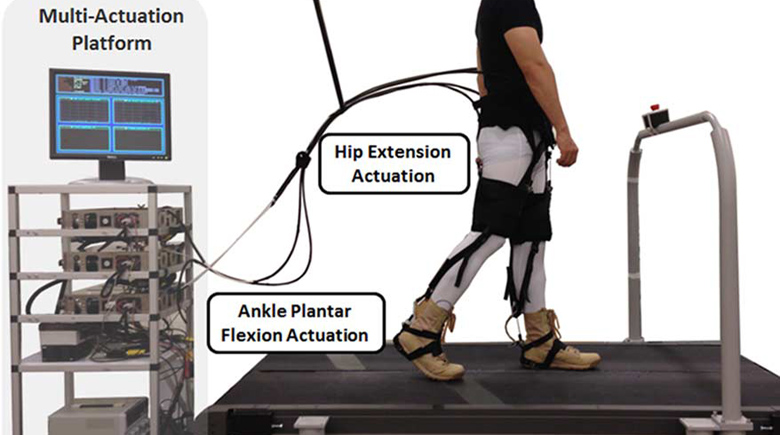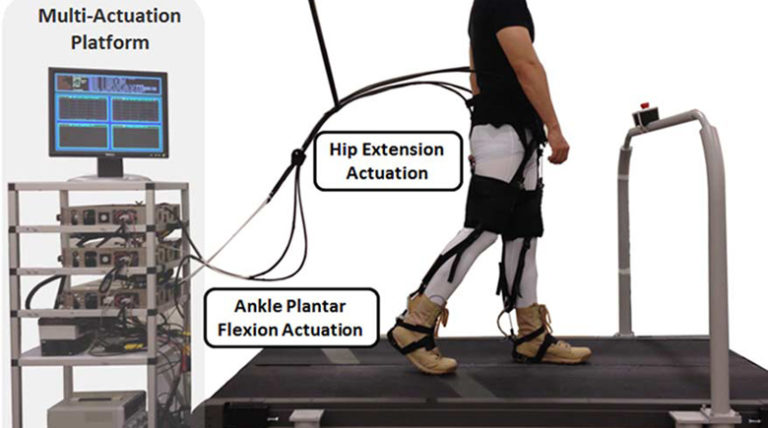
To understand the effects of soft exosuits on human loaded walking, we developed a reconfigurable multi-joint actuation platform that can provide synchronized forces to the ankle and hip joints. Two different assistive strategies were evaluated on eight subjects walking on a treadmill at a speed of 1.25 m/s with a 23.8 kg backpack: 1) hip extension assistance and 2) multi-joint assistance (hip extension, ankle plantarflexion and hip flexion). Results show that the exosuit introduces minimum changes to kinematics and reduces biological joint moments. A reduction trend in muscular activity was observed for both conditions. On average, the exosuit reduced the metabolic cost of walking by 0.21 ± 0.04 and 0.67 ± 0.09 W/kg for hip extension assistance and multi-joint assistance respectively, which is equivalent to an average metabolic reduction of 4.6% and 14.6%, demonstrating that soft exosuits can effectively improve human walking efficiency during load carriage without affecting natural walking gait. Moreover, it indicates that actuating multiple joints with soft exosuits provides a significant benefit to muscular activity and metabolic cost compared to actuating single joint.

